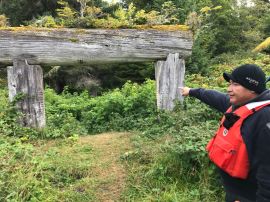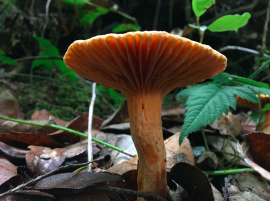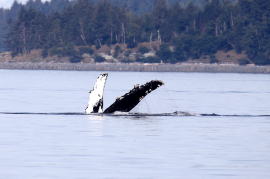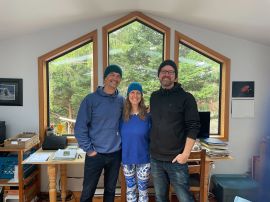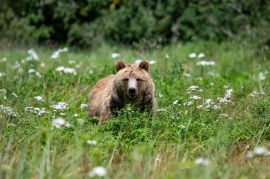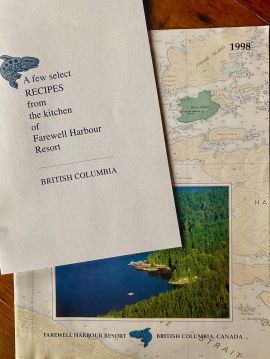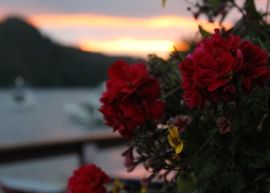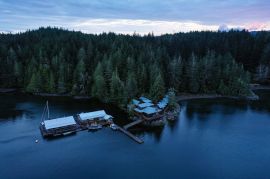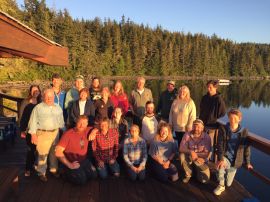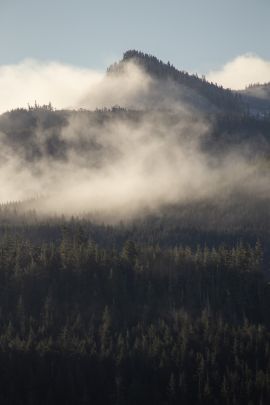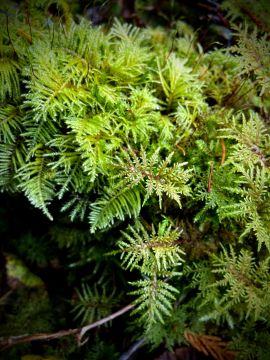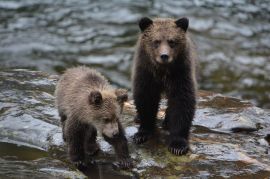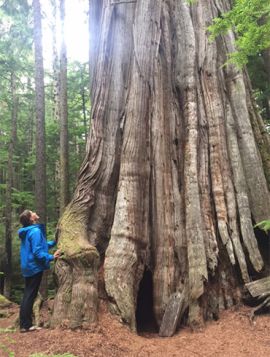Rainforest Ecology
|
Just for a moment, join us on an imaginary journey into the Great Bear Rainforest. You and your group are heading out behind Farewell Harbour Lodge into the forest on foot, and within a few minutes, you’re immersed in the rich sensory world of the coastal temperate rainforest. The trail slopes slightly downwards and winds between salal bushes and Sitka spruce trees, around sedge marshes and through moss beds. After a few meandering minutes, your group stops at a small clearing where the sunlight beams through the canopy and radiates across the forest floor, shedding light on more shades of green than you thought existed. You close your eyes and smell the cedar trees, hear the songbirds whistling, and taste the crisp, salty air. |
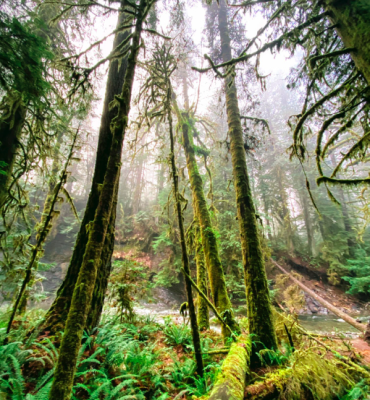 |
Trees really do communicate
While trees may seem like solitary and individualistic species, we’d see that they’re actually communicative organisms if we dig a little deeper under the soil. Much like us, trees live in a community, one that likes to share, trade and talk. They do this in two ways: via root grafts and mycorrhizal fungi. Root grafts are simple enough to understand. Roots from neighbouring trees join together to form a junction, where the two trees can exchange nutrients and natural chemicals. In some miraculous cases, when a tree is cut, leaving behind a stump, the bark of that tree will fold inward over the cut surface to seal off the inner vessels. Then the stump can be kept alive by neighbours who are feeding it via root grafts! Who would have thought there would be such a thing as tree life support.Mycorrhizal fungi are a little bit harder to understand. Essentially there’s an exchange of nutrients between the trees and the fungi, creating a harmonic symbiosis. The fungi grow in and around the root systems of trees, creating a network throughout the soil that allows the tree to better absorb water and nutrients. In return, the tree provides the fungi with sugars that are attained by photosynthesis. This heartwarming partnership is even more compelling because scientists believe this connection is also used for communication and all-around community building. For example, an older tree with a sophisticated root system could be sending extra nutrients to the surrounding young trees in the hopes that they’ll survive long enough to replace the older trees. Or, if one tree is experiencing an attack by an insect or wood rotting fungus, the host will send alarm chemicals to its neighbours to instigate the release of their defence systems against the pathogen. These generous acts between trees benefit their neighbours and keep the forest ecosystem happy and healthy as a whole, in the end benefiting organisms of all sorts.
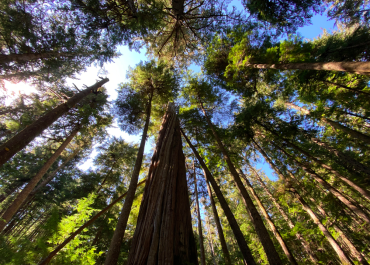 |
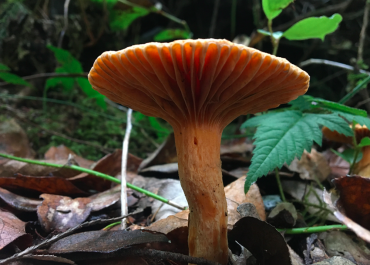 |
 |
Reduce, Reuse, Recycle!
Nutrient cycling is a common phenomenon throughout all types of forests. It means that organic molecules that make up living organisms will not leave the ecosystem. Instead, they will be degraded back down to their original form to be used again to form new life. This process takes some time, but rest assured that nothing goes to waste in the rainforest! For example, in autumn, the big leaf maple trees drop their leaves to the forest floor. By the time spring and summer come around, those leaves are barely still intact, having almost completely disintegrated. This is the work of organisms called decomposers, which consist of fungi, bacteria, insects, worms and slugs. They efficiently break down the organic material from the leaves to become part of the soil, which is then taken up by plants that are still growing. Then let’s say a deer comes along and munches on the plant leaves, transferring those nutrients into the deer to be used as energy. This cycle continues when the deer dies or gets rid of the molecules by excretion, allowing these nutrients to be used again to make new soil. This incredibly efficient and effective chain of events supports the ecosystem and makes the forest resilient and stable. |
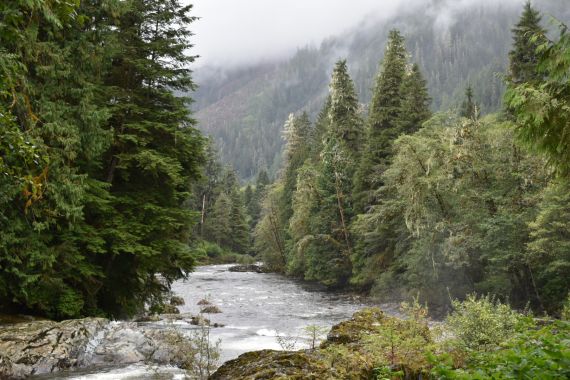 |
Out with the old, in with the new
For a forest system to be healthy, it needs to have the ability to continue regenerating new life and growth consistently. In old-growth temperate rainforests, some species of trees can live up to 2000 years and grow to be as tall as modern-day skyscrapers. Fortunately, the forest has naturally found excellent ways to nurture the new life when the old life is gone. When a tree falls to the forest floor, it will become what we call a nurse log. Because the fallen tree is so nutrient-rich, seedlings from neighbouring trees will often land on this nutrient source and have an advantage over those seedlings that lay on the soil. The fallen tree nurses the seedlings to life and provides for them until they’re fully grown, and the fallen tree has disintegrated. Often you’ll see a long row of successful, healthy trees, which likely means they stemmed from a nurse log. Another indicator is that a tree may have a tunnel at the base of the trunk, which is the space that the nurse log used to take up before decomposing under that tree. As well, when the original tree fell, it opened up significant space in the canopy, allowing the light to rush in and help new growth sprout in the understory, all competing to replace the old-growth tree.These interwoven phenomena play essential roles in the health of the forest ecosystem. Thanks to this natural genius, we have the chance to experience the magic of old-growth temperate rainforests right here in our backyard.
-- Sylvie Stewart Grantham
Photo credits: Marlie Temple, Kelli McGrady, Sylvie Stewart Grantham, Darien Walker




